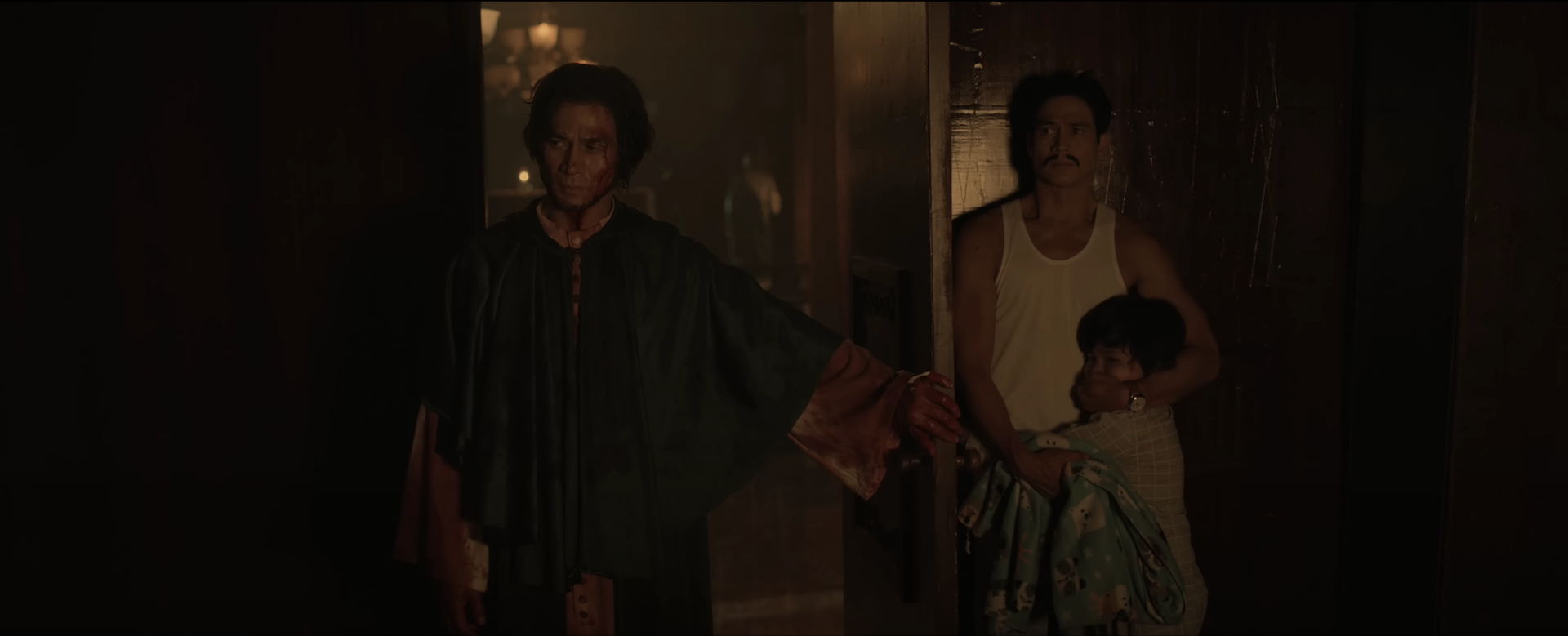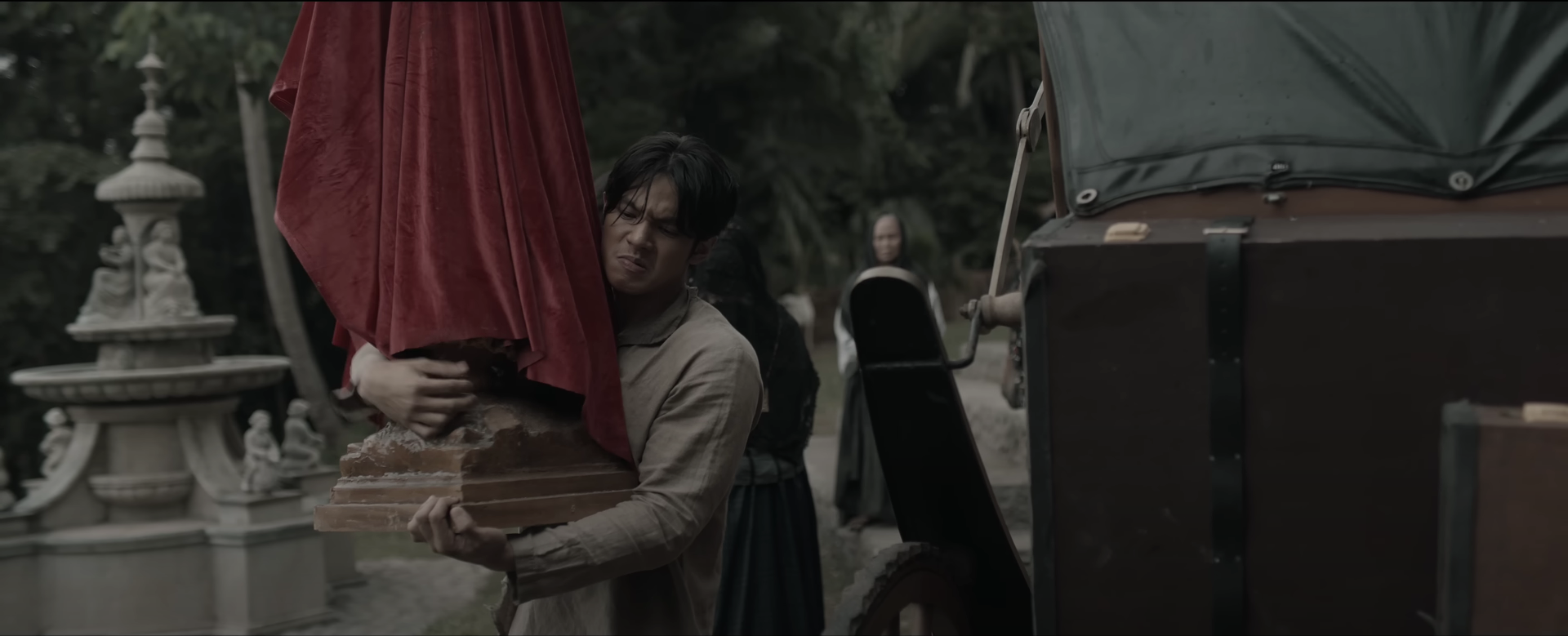IN THE context of the real and conflicted world, the desire to eliminate the dregs of society often becomes debatable, even dangerous.
This desire disturbs and haunts even the placid spaces, all in the name of achieving what is good. Even the purest individuals may resort to wreaking havoc in the preserved avenues of righteousness, intentionally or unintentionally, hoping to defeat evil.
A film’s opening usually sets the tone for what is to come. But for Mallari, its most terrifying aspect did not end or start with its slasher stint. Mallari offered a multi-layered experience of history, murder and the supernatural, all bound by the catastrophic nature of desperation brought by love and fear.
Derick Cabrido’s direction mirrors Piolo Pascual’s trio role by offering a multi-faceted storytelling of the revival of Fr. Juan Severino Mallari’s eerie and murderous history. As one of the entries for the 49th Metro Manila Film Festival (MMFF), Mallari won third best film, trailing behind Gomburza and Firefly.
Mallari also garnered awards for its visual effects and musical score, courtesy of Gaspar Mangarin and Von de Guzman. Additionally, JC Santos won the Best Supporting Actor award for his performance as the deacon Lucas Alarcon.

In a tale of judgment, all three representatives of the Mallari family’s three generations face their respective retributions. Set simultaneously in 1812, 1948 and 2023, Mallari gave viewers a deep dive into the dark secrets of the Mallari family with Cabrido’s incorporation of fictional elements into the historical truths of the country’s first-ever documented serial killer.
What weaves the three characters together is their desire to protect their loved ones, in every way possible. They are willing to go to the most menacing lengths to achieve their desired ends, even if it means losing the good within themselves. Fr. Juan Severino Mallari, Johnrey Mallari and Jonathan de Dios (all played by Piolo Pascual) faced their respective fates and moral dilemmas.
The story sought to show connections between Father Mallari of 1812, Johnrey of 1948 and Jonathan of 2023. What established their connection was the ability of both Johnrey and Jonathan to travel in time. Cabrido bridged the three characters by presenting the connections through their astral projection abilities.
Though this could be an excellent avenue for Filipinos to be more acquainted with complex plots, Mallari did not do the astral projection concept justice. Considering the historical background that the film was developed on, Mallari’s supernatural concept can already stand alone. It would be more digestible for casual viewers to let each idea shine instead of having them clash with each other just to push a storyline.
One significant probing theme across the film was the desire to eliminate the dregs in society or, as heavily suggested by the characters, mga salot sa lipunan, in exchange for the lives of their loved ones. This theme is where Father Mallari, onscreen and offscreen, based his murders on.

The film had differing representations of these pests. In 1812, it was an evil landlord. In 2023, it was Didi (Tommy Alejandro), a sex worker, and a house caretaker turned online scammer. In the many years between Father Mallari and Jonathan’s respective times, the pests were not explicitly identified, although there were scenes depicting the brutality of foreign colonizers during World War 2.
The film’s take on who constitute the dregs of society may raise questions. Directing the suffering to those who committed graver offenses could have strengthened Mallari’s theme of moral retribution as well as its intention to address moral dilemmas.
A never-ending saga of Filipino horror films is a series of jumpscares that lead to and come from nowhere. Unfortunately, Mallari is not an exception.

There were numerous uncanny shots of the Mallari household’s eerie collection of religious images around the house. It also featured a menacing but inaccurate statue of St. Bartholomew, one of the apostles of Jesus who became the subject of a false story that was used as a justification for Father Mallari’s acts. The film could have used this route to scare viewers as it alludes to the undertones of the film instead of relying on baseless jumpscares that only remind viewers of what has unnecessarily oversaturated Philippine horror cinema.
Despite the acclaim for its visual effects, Mallari’s depiction of an aswang in its supernatural aspect lacked the advancement expected from a film that supposedly has the best visual effects. The wings of the aswang, in particular, looked almost cartoonish at certain angles. But Mallari‘s deficiencies are almost forgivable with the performances of Gloria Diaz, Janella Salvador, Elisse Joson and JC Santos.
Ultimately, the film framed both offscreen and onscreen killings as coming from a reason of morality. However, Mallari’s



